On November 21, 1927, a pivotal meeting was held between John D. Rockefeller Jr. and Dr. W.A.R. Goodwin at the Vanderbilt Hotel in New York City. It culminated months of preliminary planning and discussion, as well as surreptitious nighttime measuring and recording of details about Williamsburg’s historic structures. As a result of the meeting, Mr. Rockefeller sent a letter to Dr. Goodwin on November 29, 1927, and in excerpts dated November 30, 1927, in which he expressed a commitment “…to carry out this enterprise completely and entirely.”
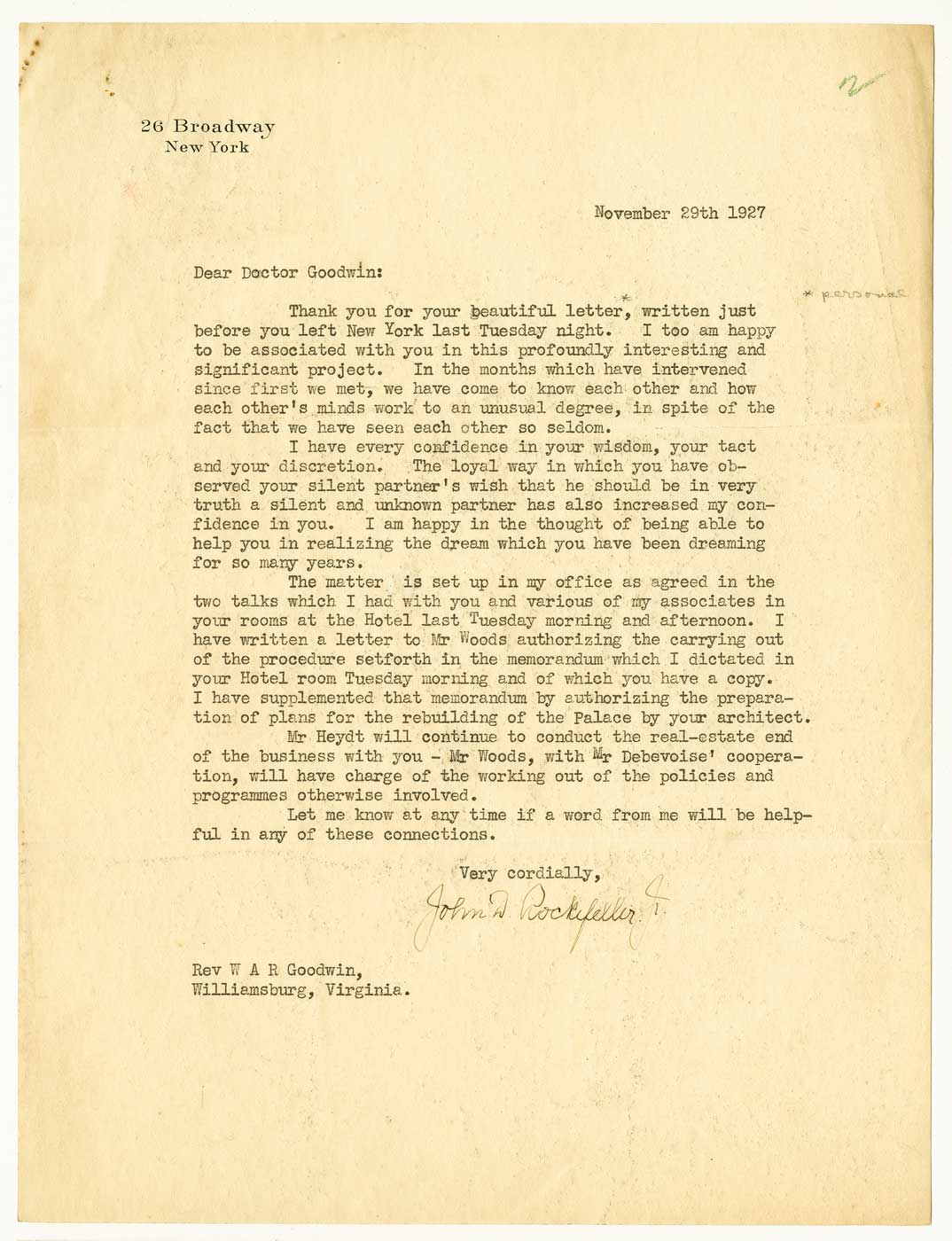
Throughout 1927, Dr. Goodwin had been working with Rockefeller as a silent partner to purchase certain historic properties in Williamsburg and with a small team of architects and researchers to undertake preliminary investigations into the existing evidence that would support accurate reconstructions or restorations at different sites. The November 1927 meeting allowed him to present to Mr. Rockefeller with an in-depth report outlining the proposed restoration work that had been reviewed and approved by a small panel of advisory architects, including William Graves Perry and Fiske Kimball. It addressed issues surrounding the displacement of modern businesses, residences, churches, and municipal buildings to carry out the project.
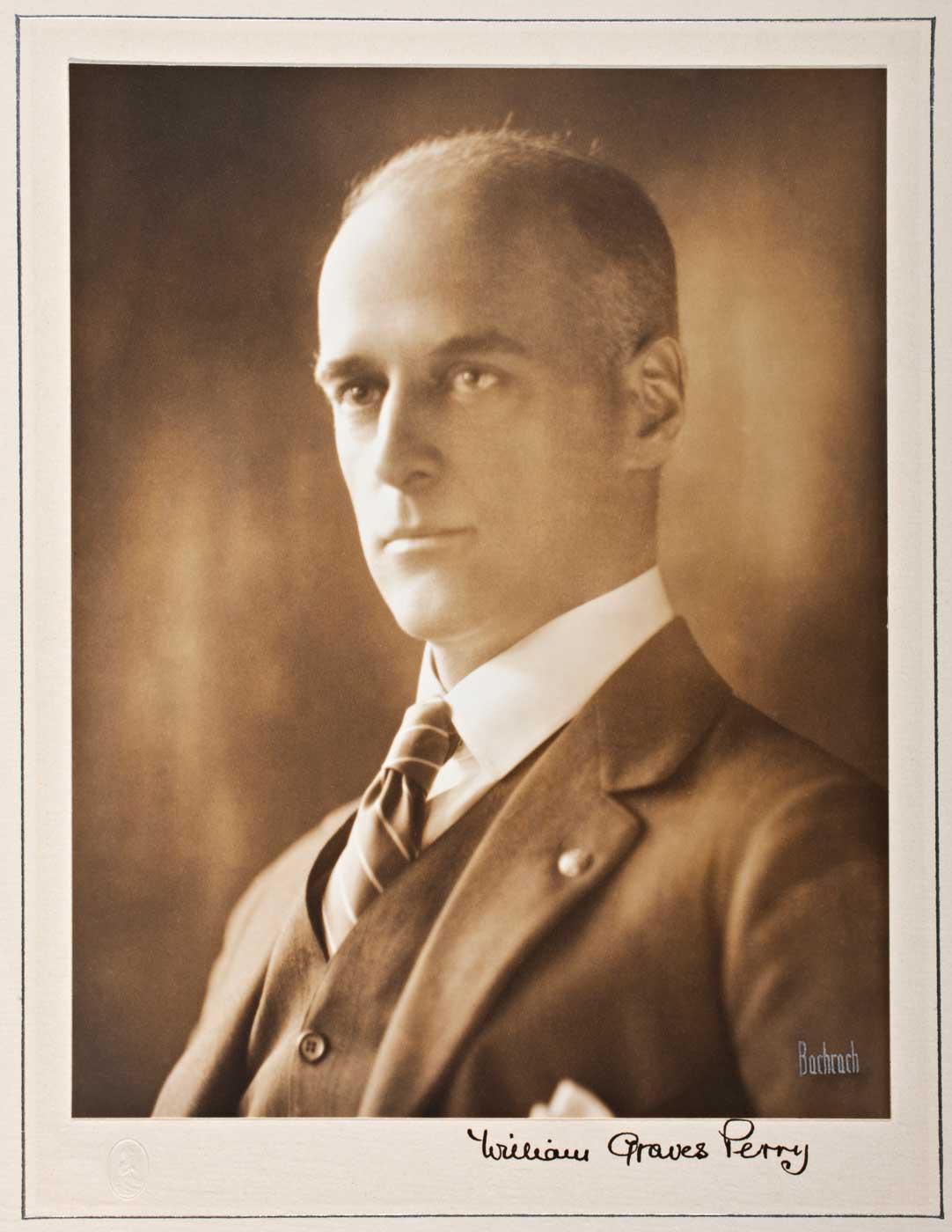
During the meeting, Goodwin presented Rockefeller with preliminary plans for the proposed restoration of various historic buildings in Williamsburg, including the Capitol, Governor’s Palace, and Wren Building. The drawings included an overall town plan created by the architectural firm of Perry, Shaw, & Hepburn of Boston. The Williamsburg Town Plan is the first drawing made by the Boston architectural firm for presentation of the overall concept for the restoration project to John D. Rockefeller Jr.. The original drawing, now lost, measured approximately eight to nine feet long, was mounted on board, and provided an overall reference for the proposed town layout that could be pointed at as Mr. Rockefeller examined more detailed drawings related to specific sites.
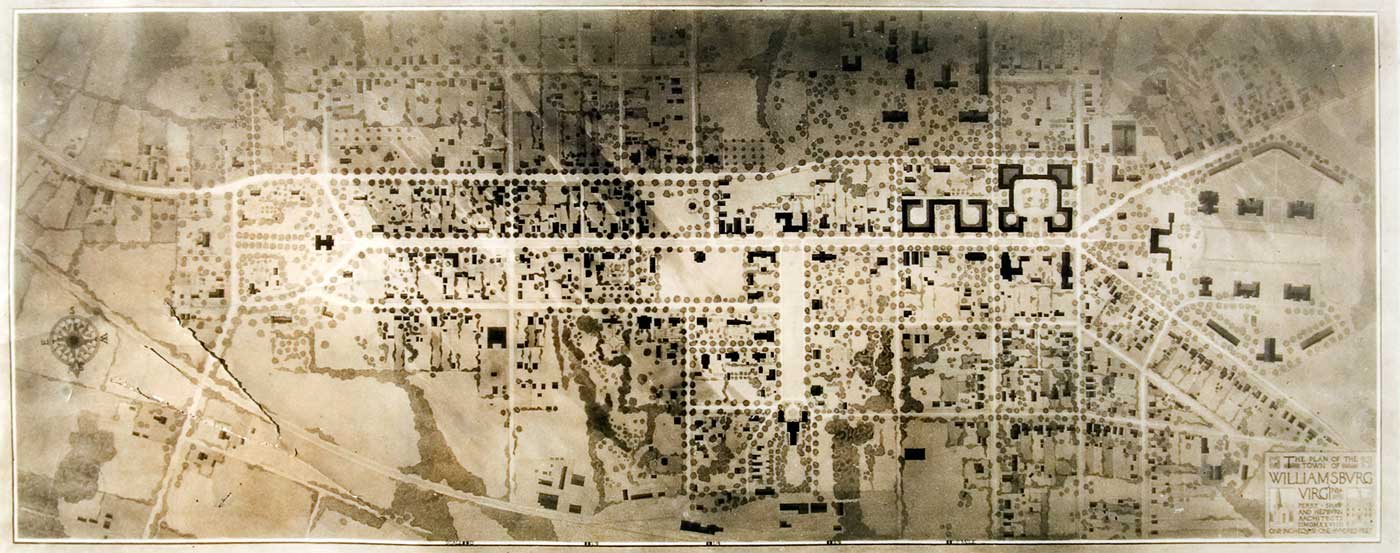
Fortunately, the Rockefeller Library holds documentary photographs of the town plan that preserve its content. This plan, looking down on the full extent of Duke of Gloucester Street from the College to the Capitol, helped Mr. Rockefeller to envision how the layout of the restored town would appear once more modern structures had been relocated. It even included the outlines for a proposed shopping district at the west end of Duke of Gloucester Street as a solution for the relocation of many businesses.

According to A Link Among the Days by Dennis Montgomery, “Perry came in from Boston…carrying an armload of oversize renderings. Some were six feet long. One was eight, maybe nine. To get them to the suite, Perry had to stand on top of the elevator, ride it to the floor below, and push them through the door above.” Dr. Goodwin anticipated similar challenges transporting the town plan to the meeting site at the Vanderbilt Hotel, noting in a letter dated November 14, 1927 “I will have to find some way to get this plan delivered to 26 Broadway in time for our interview. I will try to get up in time Monday morning to see that this transfer is made without interrupting New York traffic.”
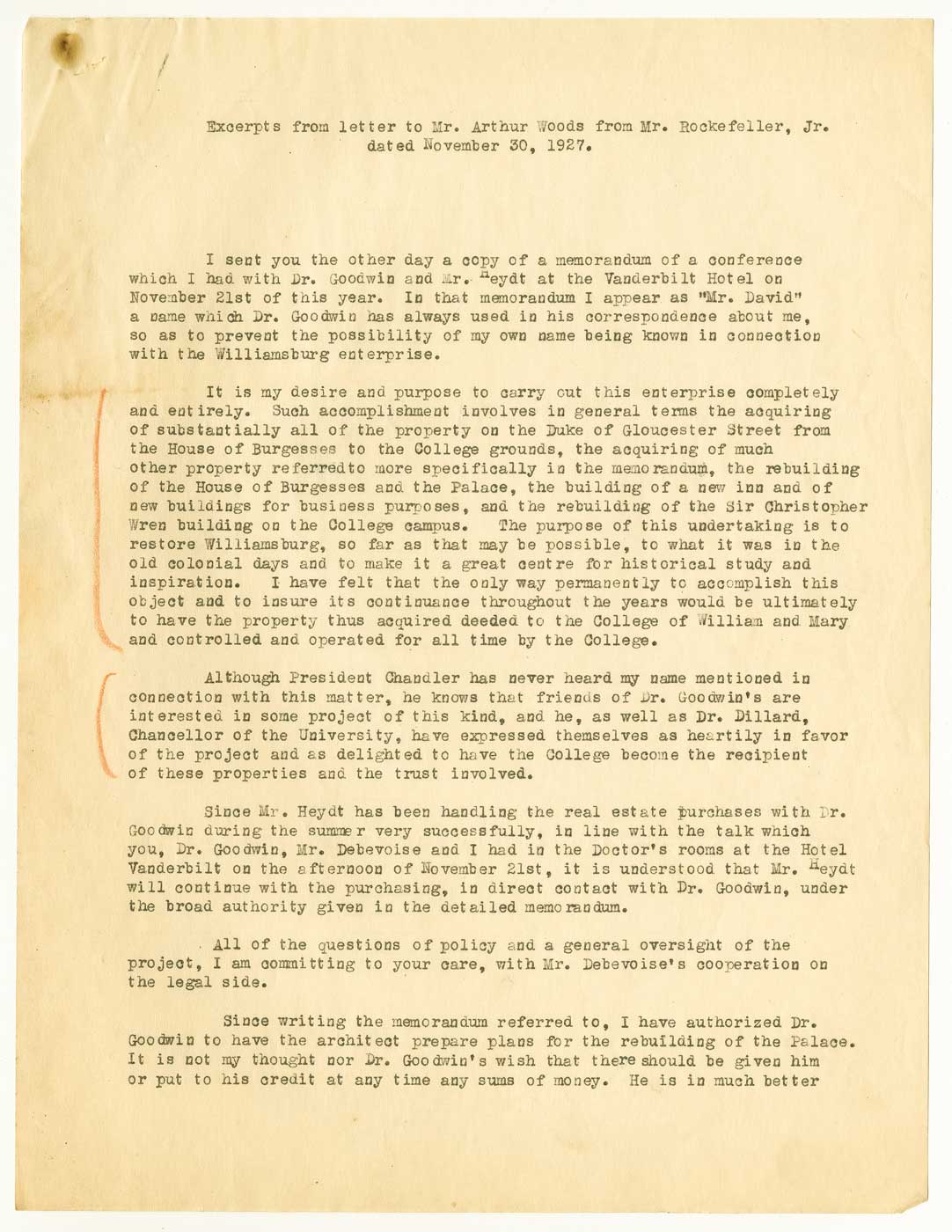
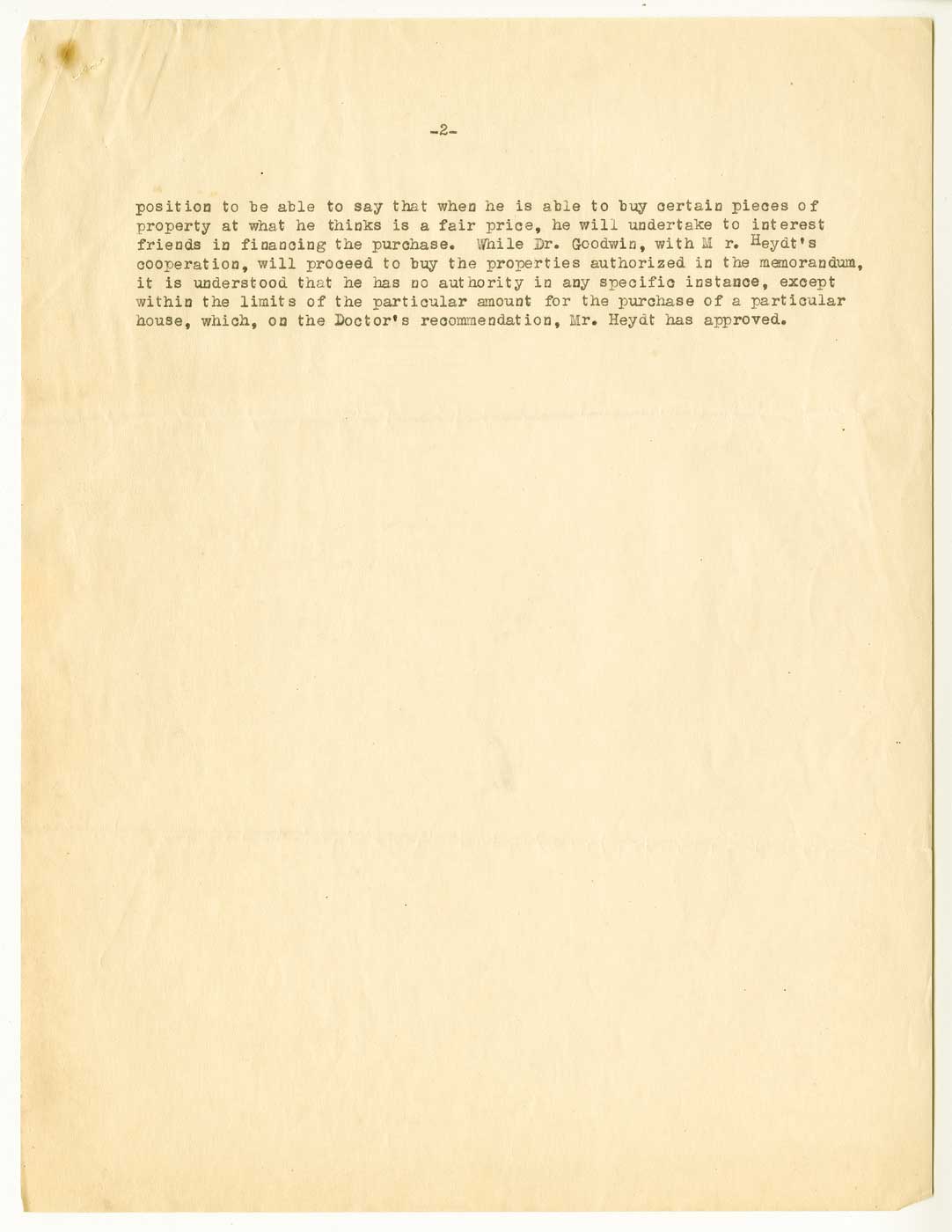
Colonial Williamsburg is the largest living history museum in the world. Witness history brought to life on the charming streets of the colonial capital and explore our newly expanded and updated Art Museums of Colonial Williamsburg, featuring the nation’s premier folk art collection, plus the best in British and American fine and decorative arts from 1670–1840. Check out sales and special offers and our Official Colonial Williamsburg Hotels to plan your visit.
